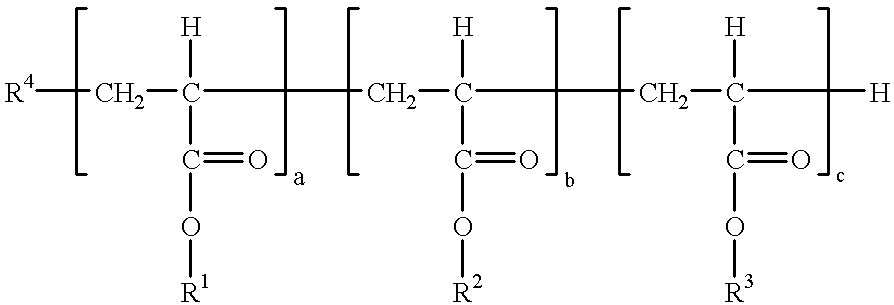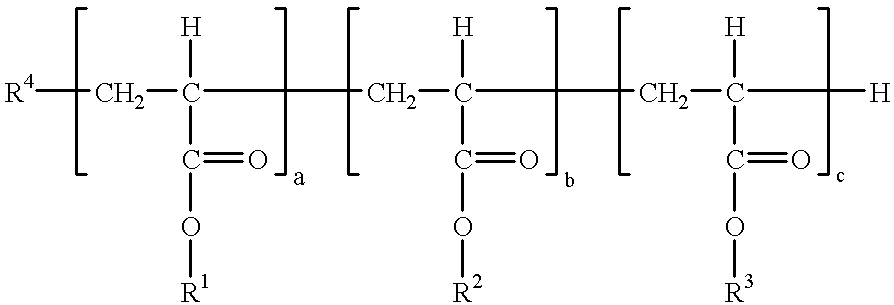Polyacrylates and their use as degassing agents for paints and coatings
a technology of polyacrylates and degassing agents, which is applied in the direction of conductive materials, non-conductive materials with dispersed conductive materials, electrical equipment, etc., can solve the problems of insufficient degassing action of such agents, distinct loss of gloss, and critical degassing problems, so as to minimize the presence of residual monomers and the associated physiological risks, uniform molecular weight distribution
- Summary
- Abstract
- Description
- Claims
- Application Information
AI Technical Summary
Benefits of technology
Problems solved by technology
Method used
Image
Examples
preparation examples
Synthesis of the Inventive and Noninventive Compounds
example 1 a
Preparation of Polymethyl Acrylate by Free-radical Polymerization (not in Accordance with the Invention)
In a reactor, 180 g of toluene was heated to 100.degree. C. under a nitrogen atmosphere. A solution of 4.7 g of azodiisobutyronitrile, 202.4 g of n-dodecyl mercaptan (1 mol) and 1378 g (about 16 mol) of methyl acrylate in 170 g of toluene was added dropwise at a constant rate over the course of 3 hours at 100.degree. C. After the end of the reaction, initiation was repeated by adding 3.2 g of azodiisobutyronitrile over the course of 1 hour, after which the reaction mixture was allowed to react subsequently for a further hour. Residual monomers and solvents are removed at 150.degree. C. under an oil pump vacuum (1 torr) and the clear, viscous product was diluted to a solids content of 80% by adding toluene. Analysis by gel chromatography assigns the resulting polymer a numerical molecular weight, Mn value (calibration against PMMA / THF), of 1848 and a weight average value, Mw, of 31...
examples 2 a and 3a
Preparation of Polybutyl Acrylates with Different Molecular Weights by Free-radical Polymerization (not in Accordance with the Invention)
The basic procedure of Example 1 A was repeated except that, as indicated in Table 1, the amount of n-dodecyl mercaptan, the monomer (butyl acrylate instead of methyl acrylate), and the amount of initiator were varied.
PUM
| Property | Measurement | Unit |
|---|---|---|
| molar masses | aaaaa | aaaaa |
| temperatures | aaaaa | aaaaa |
| reaction time | aaaaa | aaaaa |
Abstract
Description
Claims
Application Information
 Login to View More
Login to View More - R&D
- Intellectual Property
- Life Sciences
- Materials
- Tech Scout
- Unparalleled Data Quality
- Higher Quality Content
- 60% Fewer Hallucinations
Browse by: Latest US Patents, China's latest patents, Technical Efficacy Thesaurus, Application Domain, Technology Topic, Popular Technical Reports.
© 2025 PatSnap. All rights reserved.Legal|Privacy policy|Modern Slavery Act Transparency Statement|Sitemap|About US| Contact US: help@patsnap.com



